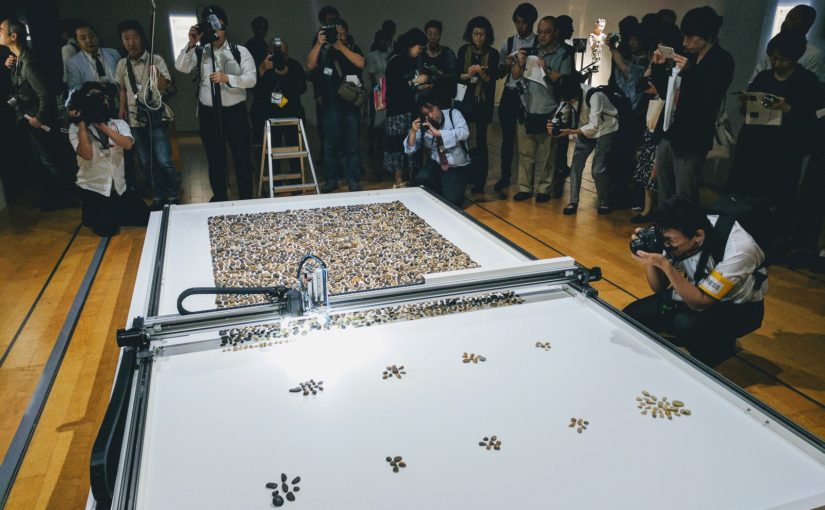Jller, got an excellence award at the Japan Media Arts Festival.
Two artists—a German who studied robotics at the University of Tokyo, and a native of the Czech Republic, the birthplace of the word “robot”— collaborated in creating what they call “a very complex and useless machine” based on the notion that “the act of collecting and sorting things is part of what made ancient humans human.” A device resembling an XY plotter uses computer vision to identify some 7,000 stones and rearranges them in a certain order with an industrial vacuum robot arm. The stones were collected from the banks of the Jller River, at a spot right before where the river flows into the Danube close to the city of Ulm, a university town that was once the capital of the Holy Roman Empire and also a place associated with historical figures like Napoleon and Einstein. Using a machine-learning algorithm for identification and analysis, the system renders the timescale of natural phenomena visible without any human intervention, just like the robots in the 1972 film Silent Running. This work is site-specific but with a universal theme, and unites geological history and artificial intelligence. Mutually contradictory elements are brilliantly combined here. An exceptional piece that particularly merits recognition at a media arts festival where so many of the other works only have a meta-perspective of time and space. – Moriyama Tomoe, Japan Media Arts Festival, 2017
